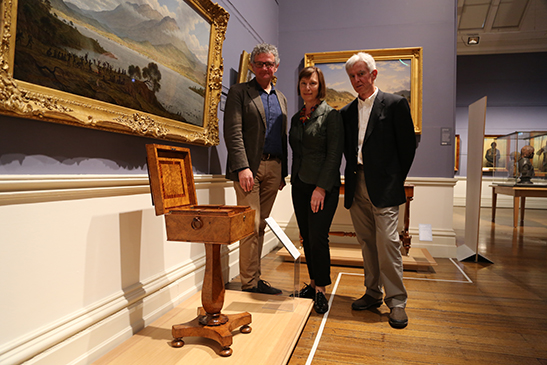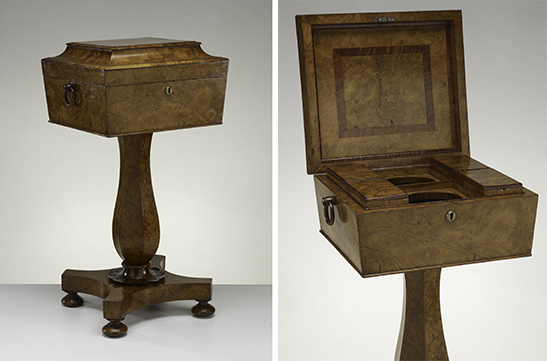TMAG keeps rare colonial furniture in Tasmania

The Tasmanian Museum and Art Gallery (TMAG) is thrilled to announce the acquisition of a rare colonial musk-wood teapoy.
TMAG recently purchased the significant piece of furniture at auction, with funds from the TMAG Foundation Ltd, the museum’s main fundraising body.
The purchase was made possible with the support of the Tasmanian Government’s matched funding philanthropy initiative, that ensures the value of donations raised by the TMAG Foundation is doubled, up to an amount of $50 000 per year.
A teapoy is a special, highly decorative piece of furniture, which was often the focal point of the dining or drawing room. It was used to store different types of tea, and fitted with bowls to mix custom blends.
Whilst the maker of this piece is unknown, it bears strong similarities to furniture made by colonial Tasmania’s foremost cabinet maker, William Hamilton, between 1835-50, and the manufacture of this particular piece is considered to be circa 1845.
Senior Curator of Decorative Arts at TMAG, Peter Hughes, said the acquisition of the colonial musk teapoy is of immense cultural significance due to its unique character and exceptional rarity given the furniture type and material from which it is made.
“This piece is an excellent example of Tasmanian colonial-period furniture making, reflecting the importance of the Tasmanian timber industry to colonists in the mid-nineteenth century and a certain pride in locally sourced materials,” Peter said.
“It is one of only four known Australian-made teapoys and will be the only teapoy on display in a public institution, making it a key addition to TMAG’s colonial decorative arts collection.”
The item was offered for sale locally by a private vendor as part of a deceased estate and is believed to have been in the same family for the past 60 years.
Director of TMAG, Janet Carding, said that TMAG is pleased to have the opportunity to acquire such a rare and significant piece of furniture for the State Collection.
“Given the strong interstate interest in this piece, TMAG is delighted to secure the teapoy and keep it in Tasmania for the benefit of the Tasmanian community and future generations,” Janet said.
“We look forward to sharing this beautiful piece of furniture with our many visitors and are extremely grateful for the generous support of the TMAG Foundation Ltd in helping TMAG to acquire this item.”
Chair of the TMAG Foundation, Ian Stewart, said that he is delighted to have been able to support TMAG in acquiring the teapoy.
“The TMAG Foundation exists to support the work of TMAG and this is a wonderful example of what the Foundation fundraising efforts can achieve. This is only made possible through the generous donations by our many supporters,” Ian said.
“Now with the Government’s matched funding initiative, every donation is doubled in value. We therefore ask that the community consider donating to the Foundation to replenish our funds so we are ready to support TMAG when the next opportunity arises.”
The teapoy is now on display at TMAG in the Dispossessions and Possessions gallery.
For more information on the TMAG Foundation, click here.

Image details: (top) Senior Curator of Decorative Arts Peter Hughes, TMAG Director Janet Carding and Chair of the TMAG Foundation Ian Stewart viewing the teapoy in the Dispossessions and Possessions gallery.
(below) maker unknown (Tasmania), Teapoy, c. 1845. Musk; musk veneer; blackwood veneer; blackwood; Huon pine; non-native pine. Purchased with the assistance of the Foundation of TMAG, 2019.

